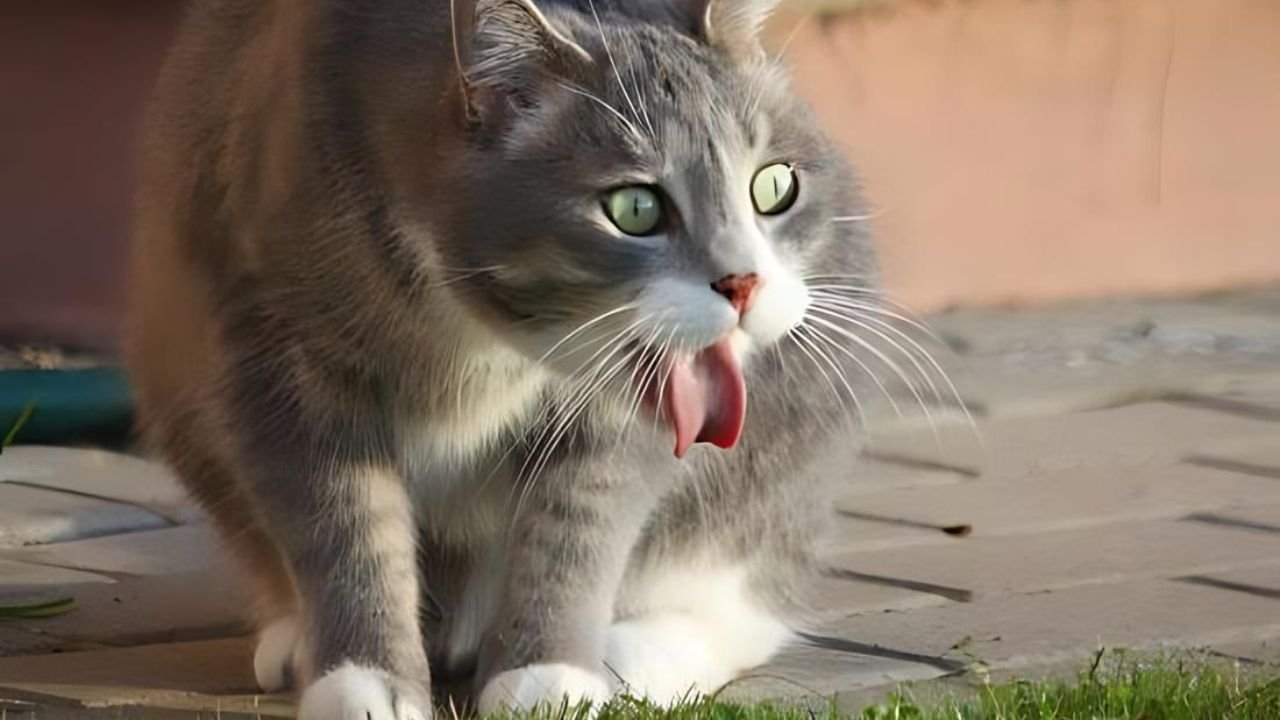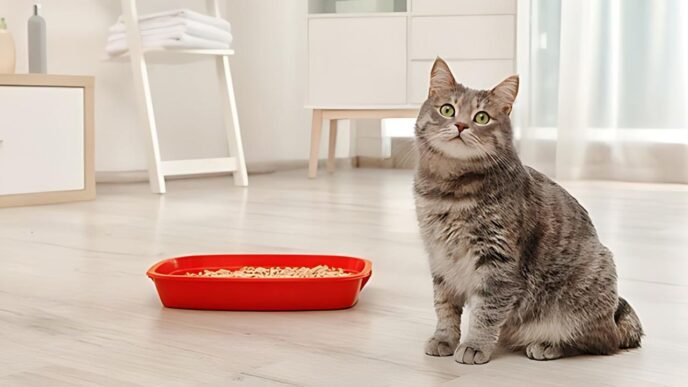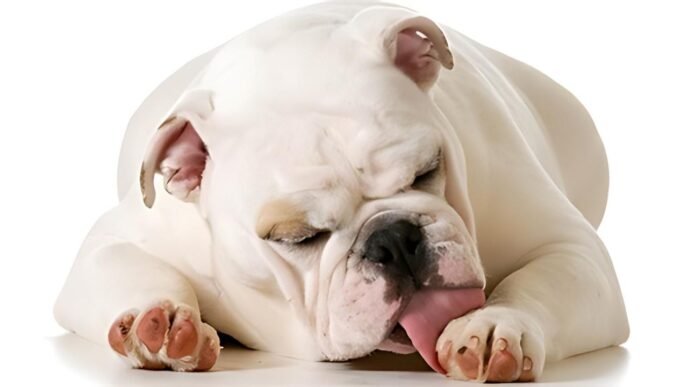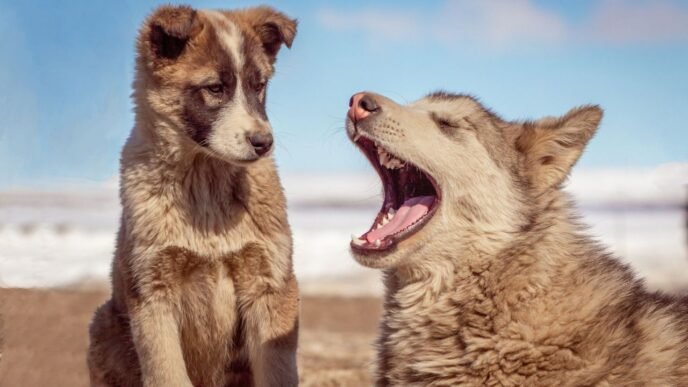Why does my cat throw up after eating? It’s a question many cat owners find themselves asking, often with a mix of concern and frustration. It’s more common than you might think, and understanding the underlying reasons can help ensure your feline friend’s health and well-being. Whether they’re gobbling down food too quickly, adjusting to a new diet, or dealing with food allergies, several factors might be at play. This post will explore the most common causes and what you can do to help your cat eat comfortably without any upset. Ready to discover Why Does My Cat Throw Up After Eating? and how to address it? Let’s get started.
- 01. Understanding Cat Vomiting
- 02. Vomiting vs Regurgitation
- 03. Common Reasons Why Cats Throw Up After Eating
- 04. Medical Causes of Vomiting
- 05. Behavioral Factors
- 07. Recognizing Serious Health Concerns
- 08. Dietary Solutions and Prevention Tips
- 09. When to Consult a Veterinarian
- 10. Preventing Vomiting in Cats
- 11. Frequently Asked Questions
- 12. Top 5 Amazon products for Cats
- Conclusion - Why Does My Cat Throw Up After Eating?
01. Understanding Cat Vomiting
If your cat is throwing up after eating, it can be a concerning sight. Vomiting is relatively common in cats, but it’s essential to understand the reasons behind it. This section will discuss various aspects of cat vomiting, its potential causes, and what it might indicate about your cat’s health.
A. Types of Cat Vomiting
There are two main types of cat vomiting: acute and chronic. Recognizing the differences can help you determine the urgency of the situation.
- Acute Vomiting: This is sudden and often unexpected. It might be related to something your cat consumed recently or an acute illness.
- Chronic Vomiting: This occurs more regularly and may point to an underlying health issue. If your cat throws up frequently, it’s best to consult a veterinarian.
For more information, you can read about the types and causes of cat vomiting.
B. Common Causes of Vomiting
Cats can vomit for many reasons. Some causes are relatively harmless, while others need immediate veterinary attention. Here are some common ones:
- Hairballs: Cats groom themselves often, swallowing hair that can accumulate in their stomachs. This can lead to vomiting hairballs.
- Dietary Indiscretion: Eating too quickly or consuming something unusual might upset your cat’s stomach.
- Food Allergies or Intolerances: Some cats are sensitive to certain ingredients in their food.
- Infections: Bacterial or viral infections can cause gastrointestinal disturbances.
- Chronic Conditions: Conditions such as pancreatitis, liver disease, or kidney problems can lead to ongoing vomiting.
Check out this detailed list of common causes of cat vomiting for more insights.
C. Signs and Symptoms to Watch
It’s essential to pay attention to other symptoms that accompany vomiting. These can help you and your vet determine the cause and severity.
- Lethargy: If your cat is less active than usual.
- Decreased Appetite: Refusal to eat can be a significant sign.
- Weight Loss: Losing weight rapidly can indicate a serious problem.
- Blood in Vomit: This is always a cause for concern and requires immediate attention.
- Behavioral Changes: Any sudden or unusual behavioral changes.
Refer to this Cornell University guide for an in-depth view of symptoms and when to contact a veterinarian.
Understanding the reasons behind why your cat is vomiting after eating can help ensure their health and well-being. Different types of vomiting and potential causes need varied approaches, and being informed enables you to react swiftly and correctly when necessary.
Stay tuned for more insights into preventing this issue and the potential health risks involved in our following section.
02. Vomiting vs Regurgitation
When your cat is bringing up food after eating, it’s crucial to understand whether they are vomiting or regurgitating. Though these terms are often used interchangeably, they refer to different processes that can have distinct causes and implications for your cat’s health.
A. Understanding Vomiting
Vomiting is an active process that occurs when the stomach muscles contract forcefully to expel contents through the mouth. It often follows nausea and includes retching.
- Signs of Vomiting:
- Retching: The abdominal muscles and diaphragm contract.
- Heaving: You’ll see heaving movements in their abdomen.
- Pre-Vomit Behaviors: Cats might drool, act anxious, or seem nauseous before vomiting.
Vomiting can indicate various issues, from dietary indiscretions, like gobbling food too fast, to more severe conditions like infections or chronic illnesses. For more information on the causes and treatment of vomiting, explore this detailed guide from the AKC.
B. Understanding Regurgitation
Regurgitation, on the other hand, is a passive process. It involves the effortless expulsion of undigested food from the esophagus before it reaches the stomach.
- Signs of Regurgitation:
- No Abdominal Effort: Cats usually don’t show the heaving or retching associated with vomiting.
- Fast Occurrence: It often happens quickly after eating.
- Undigested Food: The expelled food looks similar to what they just ate, rather than being partially digested.
Regurgitation is less common than vomiting and can be linked to issues like esophageal disorders. This distinction is important for identifying the underlying problem. For a deeper insight into regurgitation, check out this resource from Tri-City Veterinary Clinic.
C. Key Differences
Here’s a quick comparison to help distinguish between vomiting and regurgitation in your feline friend:
- Effort:
- Vomiting: Active — involves physical effort and visible distress.
- Regurgitation: Passive — seems effortless and happens suddenly.
- Appearance of Expelled Material:
- Vomiting: Often partially digested, mixed with bile, or frothy.
- Regurgitation: Resembles the same form as ingested, without bile.
- Associated Symptoms:
- Vomiting: May be accompanied by lethargy, drooling, and nausea.
- Regurgitation: Usually occurs without much warning or additional symptoms.
Understanding whether your cat is vomiting or regurgitating can help you communicate more effectively with your vet, ensuring your cat receives the appropriate care. Recognizing the signs and knowing what to watch for can make all the difference in addressing your cat’s digestive issues. For more information, check out Washington State University’s guide on vomiting and regurgitation in pets.
03. Common Reasons Why Cats Throw Up After Eating
Cats are mysterious creatures, and when they throw up after eating, it can be quite alarming for pet owners. Understanding the reasons behind this can help you take steps to ensure your cat enjoys mealtime without any hiccups.
A. Eating Too Quickly
Eating too quickly can cause your cat to throw up. This happens because the food doesn’t get a chance to be properly chewed and can overwhelm the stomach. Cats that eat fast may also swallow a lot of air, leading to regurgitation.
Possible Solutions:
- Using Slow Feeder Bowls: Use slow feeder bowls or puzzle feeders to slow down mealtime. These bowls have ridges or mazes that make it harder for your cat to gulp down food quickly.
- Small, Frequent Meals: Offer smaller, more frequent meals throughout the day rather than one or two large ones.
For more information, check out this article on why cats throw up after eating too quickly.
B. Overeating
Overeating is another common cause of vomiting in cats. Eating too much at once can stretch the stomach and lead to regurgitation.
Tips for Portion Control:
- Measure Food: Be sure to measure your cat’s food portions accurately. Follow the guidelines provided on the cat food packaging or consult your vet.
- Scheduled Feeding Times: Stick to a regular feeding schedule to avoid overfeeding. Free-feeding can often lead to overeating.
By following these tips, you can better manage your cat’s portions and prevent overeating. More details on managing this can be found here.
C. Food Intolerance or Allergy
Certain ingredients in cat food can cause food intolerances or allergies, leading to vomiting. If your cat consistently vomits after eating a specific food, they might be allergic to one of its ingredients.
Signs of Food Allergy:
- Itching or scratching: Beyond vomiting, allergies may cause skin irritations.
- Diarrhea: Gastrointestinal issues can accompany vomiting.
- Ear infections: Recurrent infections can indicate a food allergy.
What You Can Do:
- Elimination Diet: Work with your vet to conduct an elimination diet to identify the offending ingredient.
- Hypoallergenic Food: Switch to a hypoallergenic or limited-ingredient cat food.
For more tips on dealing with cat food allergies, read this guide on food intolerance and allergies in cats.
D. New Food Adjustments
Introducing a new type of food abruptly can upset your cat’s stomach and lead to vomiting. Cats need time to adjust to new dietary changes.
Transitioning to New Food:
- Gradual Introduction: Mix a small amount of the new food with their current food, gradually increasing the new food over a week or more.
- Monitor Symptoms: Keep an eye on your cat for any signs of digestive upset or allergic reactions during the transition.
Sudden changes are never easy. Following these steps can help ensure a smoother transition without causing stomach upset. Learn more about proper food transition methods here.
Understanding why your cat throws up after eating is crucial for their health and well-being. By addressing common issues like eating too quickly, overeating, food intolerances, and adjusting to new food, you can help make mealtime a pleasant experience for both you and your cat. For a further read on why cats vomit after eating, visit this helpful guide.
04. Medical Causes of Vomiting
When a cat throws up after eating, it can be a sign of various underlying medical issues. Knowing what might be causing your feline friend’s discomfort can help you get the right treatment and keep them healthy.
A. Gastrointestinal Issues
Gastrointestinal problems can be a significant cause of vomiting in cats. One common issue is inflammatory bowel disease (IBD). IBD occurs when the immune system mistakenly attacks the lining of the digestive tract, causing inflammation and disrupting digestion.
- Symptoms of IBD:
- Chronic vomiting
- Diarrhea
- Weight loss
- Lack of appetite
Cats with IBD may need a special diet or medications to manage the inflammation. To learn more about IBD in cats, visit Cornell University’s guide on feline health topics.
B. Parasites
Parasitic infestations, such as worms, can also lead to vomiting in cats. Parasites like roundworms, tapeworms, and hookworms can infect a cat’s gastrointestinal tract, causing irritation and vomiting.
- Signs of Parasitic Infection:
- Visible worms in vomit or feces
- Diarrhea
- Swollen belly
- Weight loss
Regular deworming treatments and maintaining a clean environment can help prevent these infections. For more details on how parasites affect cats and how to prevent them, check this comprehensive guide on vomiting and parasites.
C. Infections
Bacterial or viral infections can upset a cat’s stomach, leading to vomiting. Common culprits include:
- Feline panleukopenia virus (FPV)
- Salmonella
- Campylobacter
These infections disrupt normal digestion and can cause severe gastroenteritis. Cats showing signs of infection, such as vomiting accompanied by fever or lethargy, need immediate veterinary care. For more insights, visit the Merck Veterinary Manual.
D. Obstructions
Physical obstructions in the digestive tract can cause a cat to vomit. These obstructions might be due to swallowing foreign objects, hairballs, or even tumors.
- Possible Causes of Obstructions:
- Hairballs: Formed from ingested fur during grooming.
- Foreign Objects: Toys, strings, or other items cats might swallow.
- Tumors: Growths that block the passage of food.
Symptoms include frequent vomiting, abdominal pain, and constipation. Diagnostic tests like X-rays or ultrasounds can help identify obstructions. Learn more about the potential causes and treatments at Best Friends Animal Society.
Understanding these medical causes can help you take the right steps in addressing your cat’s vomiting and ensuring they receive proper care and treatment.
05. Behavioral Factors
Cats are sensitive creatures, and their behavior can sometimes lead to vomiting. Understanding these behavioral factors can help you identify why your cat might be struggling with this issue and how to address it.
A. Stress or Anxiety
Cats are creatures of habit, and changes in their environment or routine can cause stress or anxiety. This emotional turmoil can lead to physical symptoms, including vomiting. When a cat feels stressed or anxious, its body can respond in various ways, often disrupting normal digestive processes.
- Routine changes: Moving to a new house, changes in daily schedule, or the addition of new family members can all cause stress.
- Loud noises: Construction, loud music, or frequent visitors can overwhelm a cat, leading to anxiety.
- Separation anxiety: Cats may become stressed if left alone for long periods.
Stress and anxiety can manifest in various ways, and vomiting is just one of them. Creating a calm environment, providing hiding spots, and maintaining a consistent routine can help alleviate this issue. For more detailed insights, check out this guide on stress and anxiety in cats.
B. Competing with Other Pets
In multi-pet households, competition for resources like food can be intense. This competition might cause your cat to eat too quickly, which in turn leads to vomiting.
- Food competition: If another pet is perceived as a threat to food supply, a cat might gobble up their meal too fast.
- Meal-time stress: The presence of other animals during mealtime can cause anxiety, prompting the cat to rush and eat quickly.
To address this, consider feeding your cat in a separate room or using slow feeder bowls to slow their eating pace. This can help prevent indigestion and vomiting. Learn how to manage feeding in multi-pet households in this helpful article on feeding behaviors.
C. What About Grass?
One peculiar behavior you might observe is your cat eating grass and then vomiting. Though it might seem strange, this behavior is relatively common among cats.
- Nature’s remedy: Cats might chew on grass to help expel hairballs or other indigestible materials.
- Digestive aid: Grass can act as a natural laxative, aiding digestion and helping to clear their digestive tract.
While the exact reasoning behind this behavior isn’t fully understood, it’s usually not a cause for concern unless it becomes excessive. Providing indoor grass or cat-safe plants can satisfy this instinctive need without causing harm. For further reading, visit this comprehensive guide on why cats eat grass and vomit.
Behavioral factors play a significant role in why your cat may be throwing up after eating. By understanding and addressing these issues, you can help your feline friend enjoy a healthier, more comfortable life.
07. Recognizing Serious Health Concerns
While occasional vomiting isn’t always a cause for alarm, it can sometimes signal more serious health problems. Understanding the signs of serious conditions can help you act swiftly to get your cat the care they need.
A. Dehydration
Vomiting can quickly lead to dehydration, especially in cats who already have lower fluid reserves.
Signs of Dehydration:
- Dry Gums: Gums should be moist; dry ones indicate dehydration.
- Skin Turgor Test: Gently pull up the skin on the back of your cat’s neck. If it doesn’t snap back quickly, your cat is likely dehydrated.
- Sunken Eyes: Eyes may appear sunken or dull.
If you suspect your cat is dehydrated, contact your veterinarian immediately.
B. Persistent Vomiting
If your cat vomits repeatedly in a short period or experiences chronic vomiting, it could indicate a severe underlying condition such as:
- Gastrointestinal Blockages: This can be caused by ingesting foreign objects or severe hairballs.
- Kidney Disease: Vomiting can be a symptom of chronic kidney disease.
- Hyperthyroidism: An overactive thyroid can lead to frequent vomiting.
Persistent vomiting requires prompt veterinary attention to identify and treat the root cause. Learn more about common cat diseases and their signs.
C. Behavioral Changes
Sudden changes in your cat’s behavior can also be a red flag. Losing interest in activities they usually enjoy or hiding more than normal are typical signs of distress or illness.
- Lethargy: Cats are usually active; if they become unusually lethargic, it could be a sign of a serious condition.
- Aggression or Irritability: Pain or discomfort can make cats more aggressive or irritable.
- Changes in Grooming Habits: Over-grooming or neglecting to groom can signal stress or illness.
Unusual behaviors should not be ignored. Find out more about recognizing the signs of sickness in cats.
D. Weight Loss
Unexplained weight loss is a significant concern and can indicate several serious health issues, such as:
- Diabetes: Increased appetite but with weight loss can be a sign of diabetes.
- Cancer: Sudden weight loss without a change in diet could indicate cancer or other systemic diseases.
Always consult a vet if your cat is losing weight without explanation. For more insights on common feline health problems, visit VCA Hospitals.
E. Blood in Vomit
Blood in your cat’s vomit is always an urgent concern. It could suggest:
- Gastric Ulcers: These can cause bleeding in the stomach.
- Ingested Toxins: Certain poisons can cause internal bleeding.
- Severe Infections: Infections like feline panleukopenia (FP) can result in bloody vomit.
Immediate veterinary intervention is necessary when blood is present. Explore more about cat illness symptoms and treatments.
Recognizing these serious health concerns early can make a difference in your cat’s prognosis. Paying attention to the signs ensures that they get the necessary care in time to remain happy and healthy. Stay diligent and never hesitate to contact your vet with concerns about your cat’s health.
08. Dietary Solutions and Prevention Tips
If your cat throws up after eating, it’s crucial to look into their diet and how they’re fed. Here are some practical solutions and tips to ensure your feline friend stays healthy and happy during mealtime.
A. Choosing the Right Cat Food
Selecting the right cat food involves more than just picking up any bag off the shelf. The quality of ingredients greatly affects your cat’s digestive health.
- High-Quality Proteins: Choose cat food that lists meat or fish as the first ingredient. High-quality protein sources are easier to digest and provide essential nutrients.
- Limited Fillers: Avoid foods that contain excessive fillers like corn, soy, or wheat. These can be hard on your cat’s stomach and offer little nutritional value.
- Special Formulas: Consider foods formulated for sensitive stomachs or those specifically aimed at reducing vomiting. Look for brands offering limited ingredient diets, which reduce the risk of food intolerance or allergies.
For a detailed guide on what to look for in cat food, explore this comprehensive article.
B. Implementing Feeding Strategies
How you feed your cat is just as important as what you feed them. Implementing effective feeding strategies can prevent your cat from eating too quickly and reduce vomiting.
- Scheduled Feeding Times: Feeding your cat at the same times each day can regulate their hunger and prevent overeating. Stick to a routine that works for your household.
- Puzzle Feeders and Slow Feeder Bowls: These feeders make eating a challenge, slowing down how fast your cat can consume their food. This helps prevent the rapid ingestion of food and air, reducing the likelihood of vomiting.
- Smaller, Frequent Meals: Instead of one or two large meals, provide smaller meals throughout the day. This reduces the burden on your cat’s digestive system, helping prevent regurgitation.
Check out these slow feeding solutions for creative ideas to enhance your cat’s mealtime experience.
C. Monitoring and Adjusting Diet
Monitoring your cat’s reaction to different foods is crucial in maintaining their health. Changes in diet should be monitored closely to ensure they are well-tolerated.
- Observe and Record: Keep a food diary that notes what your cat eats and their reaction to it. Look for patterns that might indicate food intolerances or allergies.
- Gradual Transitions: When changing your cat’s diet, do so gradually. Mix the new food with the old one, increasing the new food amount over a week or longer. This helps your cat’s digestive system adjust.
- Consult Your Vet: If your cat repeatedly vomits after eating, consult your veterinarian. They can conduct tests to identify allergies or gastrointestinal issues and recommend appropriate dietary adjustments.
Learn more about how to properly transition your cat to new food in this helpful guide.
Addressing your cat’s dietary needs and feeding habits can significantly decrease episodes of vomiting after eating. Monitor their food intake, feed them appropriately, and make necessary adjustments with your vet’s guidance to ensure your cat remains healthy and happy.
09. When to Consult a Veterinarian
Cat vomiting can be worrisome, but how do you know when it’s time to consult a vet? Vomiting in felines, while sometimes benign, can at times indicate more serious health concerns. Understanding when to seek veterinary help is crucial for your cat’s well-being.
A. Persistent Vomiting
Persistent vomiting demands immediate veterinary attention. It’s not just about one or two isolated incidents but a recurring issue that affects your cat’s overall health. Here are signs that it’s time to call the vet:
- Frequency: If your cat vomits more than two or three times in a day, or continues to vomit over multiple days, it’s a red flag. Chronic vomiting can lead to severe dehydration and nutrient loss.
- Severity: Watching your cat throw up repeatedly or forcefully is disheartening. If the vomiting becomes severe, this could indicate something more serious, such as gastrointestinal blockage or a chronic illness.
Read more about When To Be Concerned About Feline Vomiting.
B. Accompanying Symptoms
Vomiting might not be the only symptom your cat is experiencing. Additional symptoms can provide clues about underlying health problems and the need for veterinary consultation.
- Lethargy: If your usually active cat is suddenly lethargic, it could indicate a significant issue. Cats often hide their discomfort, so a noticeable drop in energy is a concern.
- Appetite Loss: Refusal to eat or drink can rapidly lead to dehydration and malnutrition. A cat that’s not eating is a cat that’s likely suffering.
- Diarrhea: Coupled with vomiting, diarrhea can deplete your cat’s fluids and electrolytes, leading to severe dehydration.
- Blood in Vomit: Blood in the vomit is always a serious sign. It may look like coffee grounds or be fresh blood, indicating internal bleeding or ulcers.
- Weight Loss: Unexpected weight loss can indicate chronic diseases like kidney disease, hyperthyroidism, or even cancer.
- Behavioral Changes: Unusual behavior, such as hiding, aggressiveness, or aversion to being petted, signals distress and needs attention.
For more details on vomiting symptoms and when to consult a vet, visit this guide on Vomiting in Cats.
If your cat’s vomiting is persistent or accompanied by any of these concerning symptoms, don’t hesitate to seek veterinary care. Identifying and treating the underlying issues early can help ensure your feline friend stays healthy and happy.
10. Preventing Vomiting in Cats
Seeing your cat throw up after eating can be distressing. However, there are several preventative measures you can take to help reduce the frequency of this issue and to ensure your feline friend remains healthy and happy.
A. Adjusting Feeding Habits
Simple changes in how and when you feed your cat can significantly reduce vomiting.
- Smaller, Frequent Meals: Rather than feeding your cat one or two large meals a day, try dividing their food into smaller, more frequent portions. This can prevent overeating and reduce the chances of vomit.
- Slow Feeder Bowls: These bowls have ridges or obstacles that make it harder for your cat to eat quickly, which can help prevent them from swallowing air along with their food.
- Scheduled Feeding Times: Establish a regular feeding schedule to help your cat know when to expect their meals. Consistency can help reduce anxiety and overeating.
B. Choosing the Right Food
Your cat’s diet plays a crucial role in their overall health and can be a major factor in reducing vomiting.
- High-Quality Ingredients: Opt for cat food that lists high-quality proteins as the first ingredient and avoids fillers like corn or wheat. Foods with simple, natural ingredients are easier on your cat’s stomach.
- Special Formulas: If your cat has a sensitive stomach, consider foods designed specifically for digestive health or those that help control hairballs.
For more details on choosing the right food for your cat, visit Hill’s Pet Health Guide.
C. Grooming
Regular grooming can help reduce the number of hairballs, which are a common cause of vomiting in cats.
- Brushing: Brush your cat regularly to remove loose fur and reduce the amount they might ingest while grooming themselves.
- Hairball Control Products: Consider using hairball control treats or gels that help your cat pass hair through their digestive system more easily.
Find out more tips on controlling hairballs from Tampa Bay Vets.
D. Hydration
Keeping your cat hydrated is essential for their digestive health.
- Fresh Water: Ensure your cat has access to clean, fresh water at all times. Some cats prefer moving water, so a water fountain might encourage them to drink more.
- Wet Food: Including wet food in their diet can increase their water intake, which helps prevent dehydration and supports digestive health.
Discover hydration tips from Affordable Pet Vet Clinic.
E. Medical Treatments
If your cat continues to vomit frequently, it might be time to consider medical options.
- Consult Your Vet: Persistent vomiting can be a sign of underlying health issues such as infections, parasites, or chronic conditions. Your vet can provide a thorough examination and recommend treatments.
- Medication: Anti-emetic (anti-vomiting) medications can be prescribed to help control frequent vomiting and alleviate discomfort.
Learn more about medical treatments from Best Friends Animal Society.
By taking these preventative measures, you can help reduce your cat’s vomiting episodes and ensure they enjoy their meals without discomfort. Keeping a close eye on their diet, feeding habits, grooming routine, and hydration will make a significant difference in their overall health.
11. Frequently Asked Questions
After exploring why cats throw up after eating, you may have additional questions to deepen your understanding. Here are some common queries that can shed more light on this topic:
1. What Are the Common Reasons for Cats Throwing Up After Eating?
When it comes to feline vomiting post-meal, several factors can come into play. From eating too quickly to dietary intolerances, exploring the varied causes can help pinpoint the issue. Discover more about the common reasons cats throw up after eating on The Spruce Pets.
2. How Can Hairballs Contribute to Cat Vomiting?
Hairballs are a frequent culprit behind cats throwing up after meals. Understanding how these pesky hair accumulations form in your cat’s stomach and lead to vomiting can aid in managing this common issue. Delve deeper into the hairball dilemma and its connection to feline vomiting on Heart of Chelsea.
3. Is Regurgitation Different from Vomiting in Cats?
Distinguishing between regurgitation and vomiting in cats can provide crucial insights into the underlying causes of their post-meal expulsions. Dive into the nuances of these two processes and their implications for your cat’s health on Purina.
4. How Can Stress and Anxiety Impact Cat Vomiting?
Stress and anxiety can manifest physically in cats, leading to a range of health issues, including vomiting after eating. Exploring the link between emotional distress and gastrointestinal disturbances in felines can offer valuable insight into addressing this behavioral component. Learn more about stress and anxiety’s impact on cat vomiting on Science Daily.
5. What Are the Signs That Indicate When to Consult a Veterinarian for Cat Vomiting?
Knowing when cat vomiting warrants a visit to the vet is crucial for ensuring your feline companion’s well-being. Discover the red flags and accompanying symptoms that signal it’s time to seek professional veterinary care for your cat’s vomiting episodes. Explore more about when to consult a veterinarian for cat vomiting on VCA Hospitals.
By delving into these additional questions, you can gather comprehensive information on why cats throw up after eating and how to address this common concern effectively.
12. Top 5 Amazon products for Cats
01. Best Cat Toys
Looking for engaging toys to keep your feline friend entertained? Explore a wide range of cat toys on Amazon with a 4.5-star rating and prices ranging from $2 to $30. From interactive toys to feather teasers, these products offer playful experiences for your cat. Check out the best cat toys on Amazon for endless entertainment options.
02. Pet Fusion Cat Lounger
Provide your cat with a cozy resting spot with the Pet Fusion Cat Lounger. This comfortable lounging bed ensures your cat has a relaxing space to nap and unwind. Treat your furry companion to a luxurious lounging experience with this top-rated cat lounger. Explore the Pet Fusion Cat Lounger on Amazon for ultimate comfort.
C. ChomChom Pet Hair Remover
Say goodbye to pet hair on your furniture with the ChomChom Pet Hair Remover. This effective tool helps keep your home clean and hair-free by easily removing pet hair from various surfaces. Keep your living space tidy and pet hair-free with the ChomChom Pet Hair Remover. Get the ChomChom Pet Hair Remover on Amazon for a cleaner environment.
D. Catit Water Fountain
Ensure your cat stays hydrated with the Catit Water Fountain. This innovative fountain provides running water, encouraging your cat to drink more and stay hydrated throughout the day. Keep your cat healthy and hydrated with the Catit Water Fountain. Discover the Catit Water Fountain on Amazon for optimal hydration.
E. PetSafe Automatic Litter Scooper
Simplify your cat’s litter box maintenance with the PetSafe Automatic Litter Scooper. This automated scooper efficiently cleans your cat’s litter box, saving you time and effort. Keep your cat’s litter box clean and odor-free with the PetSafe Automatic Litter Scooper. Get the PetSafe Automatic Litter Scooper on Amazon for hassle-free litter box maintenance.
Read More: Why Does My Cat Gently Bite Me? 5 Surprising Reasons Revealed
Conclusion – Why Does My Cat Throw Up After Eating?
Understanding why your cat throws up after eating is crucial for their well-being. From common causes like eating too quickly, overeating, food intolerances, to more serious issues like infections or gastrointestinal problems, there are various factors at play. Monitoring your cat’s eating habits, seeking veterinary advice when needed, and implementing preventive measures can help reduce episodes of vomiting and ensure a healthier life for your feline companion. Stay informed, attentive, and proactive in addressing your cat’s digestive issues for a happier and healthier furry friend.
For further insights and tips on managing your cat’s vomiting after meals, continue exploring reputable sources and consulting with your veterinarian. Your cat’s health is worth the attention and care to ensure a comfortable and contented life.













